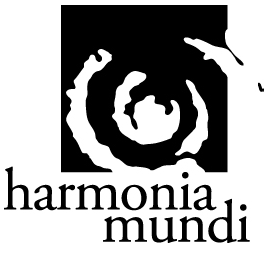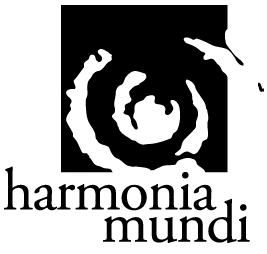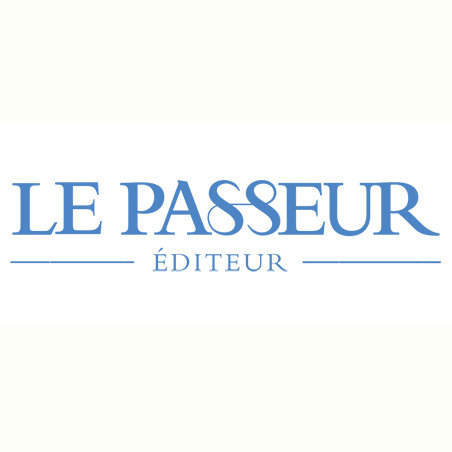Wombat: contact et modalités de dépôt d'un manuscrit
Contact
Adresse
3, rue Simart, 75018 Paris FrancePartenaires
Distributeur

Diffuseur

Maisons d'éditions similaires :
Cahiers dessinés (Les)
Silvana Editoriale
C’est en 1948 que Amilcare Pizzi a fondé Silvana Editoriale (ainsi appelée en souvenir de sa fille Silvana, prématurément disparue en 1944) et a ensuite développé avec rigueur et passion les activités de la maison d’édition en publiant des ouvrages de très grande qualité.
Mentionnons les « Cartelle Silvana » (comme Masaccio, Beato Angelico, Piero della Francesca, Michel-Ange, Léonard et Raphaël), qui ont vu le jour à l’occasion du premier congrès de l’UNESCO, organisé à Beyrouth en 1949, et la « Collezione UNESCO dell’arte mondiale », créée en 1954, également pour cette institution. À ces deux premières collections se sont ajoutées « Mito del colore », « Monografie », « Pochoir » et « Arte Moderna », dans laquelle a été publiée la première édition italienne en trois volumes des lettres de Vincent Van Gogh.
Parmi les monographies, signalons en particulier le livre consacré aux fresques de Mantegna dans la chapelle Ovetari de l’église des Érémitiques de Padoue, le seul document existant réalisé par les techniciens de la société Amilcare Pizzi spa en mars 1944, quelques jours avant que la chapelle ne soit détruite par les bombardements ; le livre de Mina Gregori sur Giacomo Ceruti (1982) ; la monographie de Carlo Bertelli sur Piero della Francesca (1991) ; Gesta dipinte. La grande decorazione nelle dimore italiane dal Quattrocento al Seicento de Julian Kliemann (1993, lauréat du deuxième prix Amilcare Pizzi).
La maison d’édition s’est employée pendant des décennies à valoriser le dessin italien, en créant une collection inaugurée avec I grandi disegni italiani dell’Albertina di Vienna (1972) de Walter Koschatzky, Konrad Oberhuber et Eckhart Knab, auquel s’ajouteront plus tard Raffaello. Il Cartone per la Scuola di Atene (1972) de Konrad Oberhuber et Lamberto Vitali, et I disegni del Codice Resta (1979) de Giulio Bora. Cette collection prendra fin avec le volume annuel édité en 2005.
En ce qui concerne les coéditions dans le domaine de la photographie et de l’art contemporain, nous tenons à signaler les albums photographiques de William Klein Mosca et Tokyo (1964) et, parmi les ouvrages monographiques, la première monographie sur Francis Bacon (1966), l’œuvre complet de Marino Marini (1971, avec 50 exemplaires de luxe numérotés en coffret avec eau-forte) et le livre sur Calder, issu de la collaboration de H. Harvard Arnason et Ugo Mulas (1971).
Parmi les nombreux catalogues d’exposition, mentionnons en particulier ceux de Franco Russoli sur Picasso (1953), de Charles Terrasse sur Pierre Bonnard (1955), de Renata Cipriani et Giovanni Testori sur les Pittori della realtà in Lombardia (1953), de Roberto Longhi sur l’Arte lombarda dai Visconti agli Sforza (1958), de Massimo Pallottino sur la Mostra dell’arte e della civiltà etrusca (1955), de Mario Bussagli sur l’Influsso classico ed iranico sull’arte dell’Asia Centrale (1956), sans oublier l’ensemble du corpus des catalogues des expositions (11) à l’occasion des manifestations pour le cinq-centième anniversaire de la mort de Laurent de Médicis (1992).
Dans le domaine de l’art contemporain, rappelons la collaboration avec le PAC – Pavillon d’Art Contemporain de Milan, qui a donné lieu à la publication des catalogues sur Luciano Fabro de Germano Celant (1980), sur Lella et Massimo Vignelli (1980) et Lluís Domènech i Montaner (1980), sur les Origini dell’Astrattismo (1979), Alik Cavaliere. I luoghi circostanti (1992) de Guido Ballo, et Afro. Dipinti 1931-1975 (1992) de Luciano Caramel, tous les trois pour le Palais Royal de Milan, ainsi que le catalogue sur Aliventi, Arp et Viani pour le Forte di Belvedere à Florence (1992), sous la direction d’Enrico Crispolti.
Dans le secteur du graphisme et du design, signalons la collection « Progetto Immagine » (1976), distribuée avec la marque Amilcare Pizzi Editore et forte de quatre titres : Lo Studio Boggeri 1933-1973 ; Carla Cerati. Mondo Cocktail ; Alberto Rosselli, lo spazio aperto ; Roberto Sambonet, il disegno come doppio, ainsi que la collection « Arte e Pubblicità » (1959), inaugurée par les trois volumes consacrés à l’activité d’Erberto Carboni, avec les préfaces, respectivement, de Herbert Bayer, Gio Ponti et Gillo Dorfles, auxquels s’ajouteront La Grecia in sogno, avec une préface de Jean Cocteau, où le graphisme, l’impression, la photographie et les textes composent un unique portrait recréant une atmosphère délicate empreinte d’un charme subtil. Erberto Carboni réalisera la couverture du catalogue général de la maison d’édition de 1962-1963, suivi par Paolo Lionni avec la photographie d’Ugo Mulas (1963) et par Marco del Corno, qui sera ensuite le directeur artistique de Silvana Editoriale pendant plusieurs années.
À partir du milieu des années 1990, la maison d’édition a redéfini sa stratégie éditoriale et s’est engagée dans un parcours de croissance et de développement sur les marchés national et international, principalement dans les secteurs de l’art, du design, de l’architecture et de la photographie. Toute cette activité est documentée dans le catalogue disponible sur le site internet.
Aujourd’hui, Silvana Editoriale publie plus de 400 titres par an, en collaboration avec des fondations, des instituts de recherche, des universités et des musées présents principalement en Europe, aux États-Unis et au Moyen-Orient.
Dans le domaine de l’art antique, à côté de monographies et de catalogues d’exposition, nous tenons à mentionner les collections « Studi della Biblioteca Hertziana » (depuis 2006), « Biblioteca d’Arte » (depuis 2002), une collection plurilingue réunissant des essais, des recherches et des actes de congrès nationaux et internationaux, et forte aujourd’hui de plus de 60 titres, et la revue Arte Medievale (depuis 2002).
Dans le domaine de l’art moderne et contemporain, nous désirons signaler, à côté des monographies, la collection « Biblioteca d’Arte Contemporanea » (depuis 2001), qui compte aujourd’hui plus de 30 titres, la collection « Fil rouge », qui raconte les histoires des collectionneurs et de leurs collections, ainsi que la collection des catalogues généraux et raisonnés d’artistes italiens et étrangers, dont ceux sur Francesco Paolo Michetti (2018) et Achille Perilli (2019), les derniers parus.
Dans le domaine de l’architecture, rappelons la collection de l’université d’Architecture de Mendrisio (depuis 2010), en coédition avec Mendrisio Academy Press, et la nouvelle collection « Biblioteca d’Architettura », qui regroupera des essais, des monographies, des recherches et des actes de congrès nationaux et internationaux.
Dans le secteur du design, notre maison d’édition se distingue par son engagement en faveur de la valorisation du design italien du XXe siècle, avec la publication, en particulier, de catalogues généraux en collaboration avec des archives privées et avec les archives universitaires de l’IUAV de Venise et du CSAC de Parme.
Dans le domaine de la photographie, Silvana Editoriale a renforcé sa collaboration avec Camera – Centro Italiano per la Fotografia de Turin (depuis 2015), avec le Festival Fotografia Europea de Reggio Emilia (depuis 2014) et avec l’Institut du Monde Arabe de Paris, pour la Biennale de Photographie Arabe Contemporaine (depuis 2017), qui vient s’ajouter à une importante production annuelle d’ouvrages monographiques.
Dans le secteur du graphisme publicitaire, Silvana Editoriale poursuit son travail d’approfondissement et de valorisation grâce à la collection « Manifesti/Posters » (depuis 2009) et « Grafica e Pubblicità » (depuis 2016), en poursuivant la tradition inaugurée par Amilcare Pizzi en 1959.

Camion Noir
Eoliennes

Perrin

Le Passeur éditeur
Complicités
Les éditions Complicités ont été fondées en 1991 par Chantal Vieuille, formée par l'éditeur Robert Morel puis devenue, entre autres, une collaboratrice de Christian de Bartillat alors éditeur chez Plon.
Au fil des années, la maison d'édition a développé un catalogue de livres autour de plusieurs collections où l'art se mêle à la littérature. La maison d’édition a ensuite été cédée en 2008 à Patrick Ardoin, auparavant patron de presses, qui a mis en place une nouvelle dynamique commerciale, de nouvelles ambitions, notamment en faveur de l'édition numérique.
Tout en poursuivant cette volonté de servir la culture de l'écrit, en utilisant les moyens technologiques mis à sa disposition. Après 8 années à la direction de la maison, Patrick Ardoin a choisi de se concentrer sur ses activités associatives et notamment la présidence de Teriya Amitié Mali. Il a donc cherché un successeur.
Désormais reprise par Olivier Petot, celui-ci poursuivra le développement de la maison dans le respect des fondements mis en place par ses glorieux prédécesseurs. Olivier Petot a créé en l’an 2000 les Editions Publibook et y a travaillé pendant 16 ans.

Arcane 17
FYP éditions
Croquant (Editions du)
La création des éditions du Croquant en 2003 traduisait une double ambition. D'abord, garantir le mieux possible l'indépendance future de la structure dans un système dominé par les grands éditeurs privés. D'où le choix d'une coopérative, donnant tout le pouvoir aux porteurs de parts, sur un pied de stricte égalité : quel que soit le nombre de parts en sa possession chaque sociétaire dispose d'une voix à l'assemblée générale annuelle.
Privilégier ensuite la qualité des publications. Dans un premier temps appui a donc été pris sur les sociologues regroupés autour de l’association Raisons d'agir, fondée par Pierre Bourdieu et devenue depuis Savoir/Agir pour bien marquer la complémentarité entre savoirs scientifiques et action politique. Avec cependant une double ligne rouge : la volonté de transgresser, au moins en partie, les frontières rigides entre l’univers scientifique et l’action politique va de pair avec le souci de rester fidèle tant aux exigences de l’autonomie du champ scientifique qu’à celles de la pertinence et de l’efficacité politiques.
Les auteurs publiés dans ce cadre voulaient ainsi donner corps au projet de construction d'un intellectuel collectif tel que l'avait souhaité Pierre Bourdieu lui-même.
La première collection, à dominante sociologique et fortement inspirée par les idées de Pierre Bourdieu, a été intitulée tout naturellement Savoir/Agir. Elle a donné lieu plus tard à plusieurs élargissements : vers les sciences sociales avec Champ social, puis, en se spécialisant, vers la science politique avec SocioPo, vers l'économie avec Dynamiques socio-économiques, vers l'histoire avec Sociologie historique
Parallèlement, le souci d'une présence plus dense dans l'actualité éditoriale doublé par celui de donner à davantage de jeunes chercheurs de vraies possibilités de faire connaître leurs travaux ont conduit dès 2007 à créer une revue trimestrielle, appelée, elle aussi, Savoir/Agir, qui est aujourd’hui dans sa onzième année d'existence. Cette expérience positive a été prolongée récemment par l'accueil de la revue Zilsel, abordant d'autres champs de la connaissance (science, technique, société) avec de nouvelles équipes d'auteurs.